Delphinium perennial: features of care, planting and growing from seeds
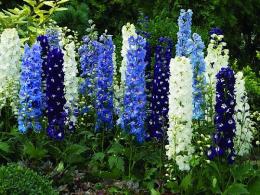
Delphinium perennial is a beautifully flowering, perennial and desirable plant for many beginning gardeners. The flower is unpretentious and has persistent, fragrant blooms. Like most flowering plants, delphinium - a honey plant, it attracts arthropods with an unsurpassed aroma. Today we’ll talk about the features of caring for and growing plants from seeds.
Content:
- Delphinium perennial - grow a flowering one from seeds
- Proper care equals a good “flower harvest”
- Delphinium perennial - the best plant for decoration
Delphinium perennial - grow blooming beauty from seeds
Delphinium belongs to a perennial plant of the Ranunculaceae family. The flower is quite large in size and can reach a height of 2 meters. Its dense candle-shaped inflorescences are easy to recognize; the flowers can be colored blue, cyan, violet, white and yellow. You can start sowing perennial delphinium seeds in early March, but this is provided that the severe frosts have already subsided. There are several secrets to growing a flower from seeds, and if you follow these little tips, the plant will give you beautiful, fragrant flowering. It is interesting to know that flowering after planting seeds occurs only in the second year of life.
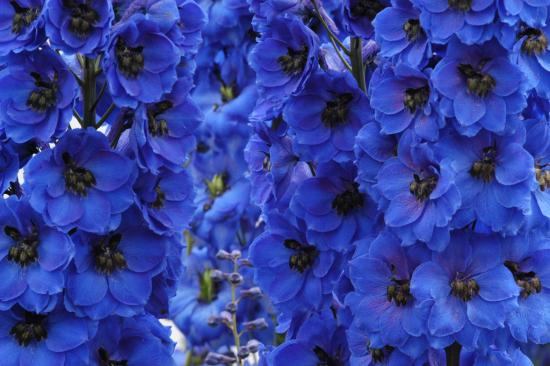
Secrets of growing delphinium from seeds:
- Before sowing seeds, experts recommend soaking them in zircon, literally for a day.
- Prepare a container for sowing seeds. Ordinary chernozem is recognized as the best soil for delphinium.
- After the seeds have stood in zirconium, they must be sown in prepared soil. Dig holes 10 millimeters deep and cover with soil.
- Cover the pike-perch with a bag and refrigerate for 2 weeks.
After the seeds have brewed, place them on the windowsill. Provide sufficient heat, moisture and sunlight. Very soon the first embryos will begin to appear. And already at the end of April you can start planting seedlings on open ground.If you want to plant a perennial delphinium in winter right on your windowsill, then you shouldn’t bother too much. All you need to do is prepare the right substrate, which in our case is black soil and, of course, a vessel for growing. Sow the seeds in the soil, put the pot in the refrigerator, remove it after 2 weeks and monitor the development of the plant. Frequent watering and keeping it moderate are a flower’s best friend.
The best period for planting perennial delphinium seeds in open ground is considered to be the beginning of summer. If the spring turns out to be warm, then planting can begin earlier.
Stages of planting perennial delphinium seeds in a flower bed
- Fluff the soil using a shovel and rake. This will saturate the earth with oxygen. If you haven't had time to fertilize, it's not too late to do so. Choose special fertilizers for flowering plants. Make shallow furrows, 20,025 millimeters deep.
- Moisten the pits with a small amount of water. Wait until the soil will absorb water.
- Start sowing the seed. Remember to maintain a distance of 2 centimeters.
- Bury the seeds and lightly compact the soil. Planting perennial delphinium is not a difficult task.This is not a demanding plant. It is enough to follow just a few rules, and the flower will develop well.
Proper care equals a good “flower harvest”
It was already written above that perennial delphinium blooms only in the second year, after planting the seeds. The flower will bloom in mid-summer. Remember to remove blooms that have faded. This will increase the chance of flowering in the fall. Remember that perennial delphinium also reproduces vegetatively. To do this, it is enough to divide the rhizomes of the plant and plant them into the ground. Flowering is expected this year.
Delphinium in landscape design on video:
Competent care includes:
- Moderate watering. Delphinium is a moisture-loving plant, but moderation must be observed everywhere. Do not overwater the plant, otherwise the roots may rot. The best period for watering is evening, sunset.
- Loosening the soil. Loosening the soil in natural conditions is provided by earthworms. If there are few of these invertebrates on your territory, then help the soil yourself. Push the ground with a pitchfork.
- Clearing the soil of weeds. Do not forget to weed the area from weeds in a timely manner. They forget the soil and prevent the plant's roots from absorbing enough nutrients.
- Fertilizer application. If you did not have time to apply fertilizer in the fall or spring, then you should not do this in the summer. Only harmless liquid supplements will be useful to you, and then in small doses.
Remember that perennial delphinium can be attacked by parasites and pests. Do not forget to check the stems of the plant, and fight insatiable ones in time pests.
Delphinium perennial - the best plant for decoration
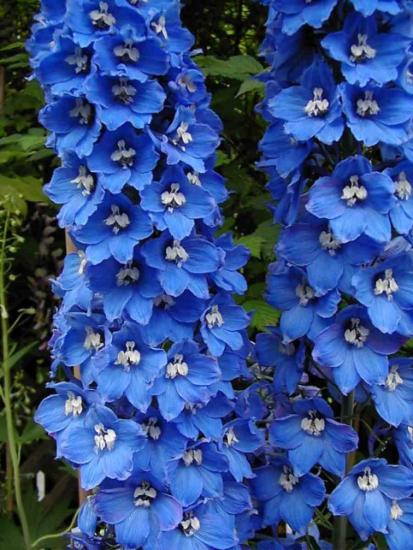
Perennial delphinium is a decoration for any garden.The rich, bright colors of the buds help in vertical gardening of the area and are excellent neighbors of climbing roses. With proper care, the plant can bloom until the first frost. It is for this quality that gardeners love the noble flower. Perennial delphinium It looks great on walls and fences, so it is used to decorate high rooms. The plant looks good next to “dry bodies of water” - imitating peculiar sea waves.
The trunk of the plant looks really very powerful. If you want the delphinium to develop well, do not forget to cut off dried buds and leaves in a timely manner. It is interesting to know that in ancient times the leaves of perennial delphinium were used as a medicine. The leaves acted as an antiseptic and healed wounds well.
Delphinium flowers will decorate any room, add rich colors to the room and fill the house with a floral aroma. So unpretentious, but so beautiful. These are the words I would like to say in conclusion about perennial delphinium.
Interesting information about the vegetable garden

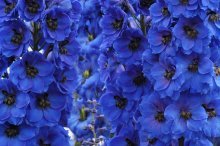

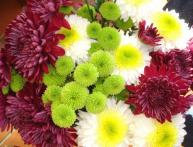

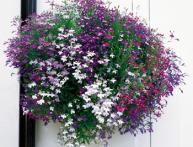
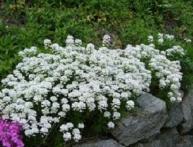

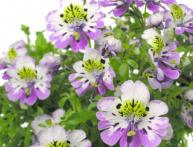
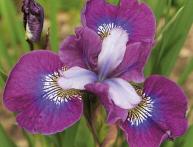
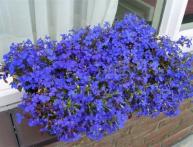
Comments
They say that breeding and caring for delphinium is very difficult. But now I am convinced that this is not so. I just love this flower. In the spring I will definitely buy seeds and plant them in my flowerbed.